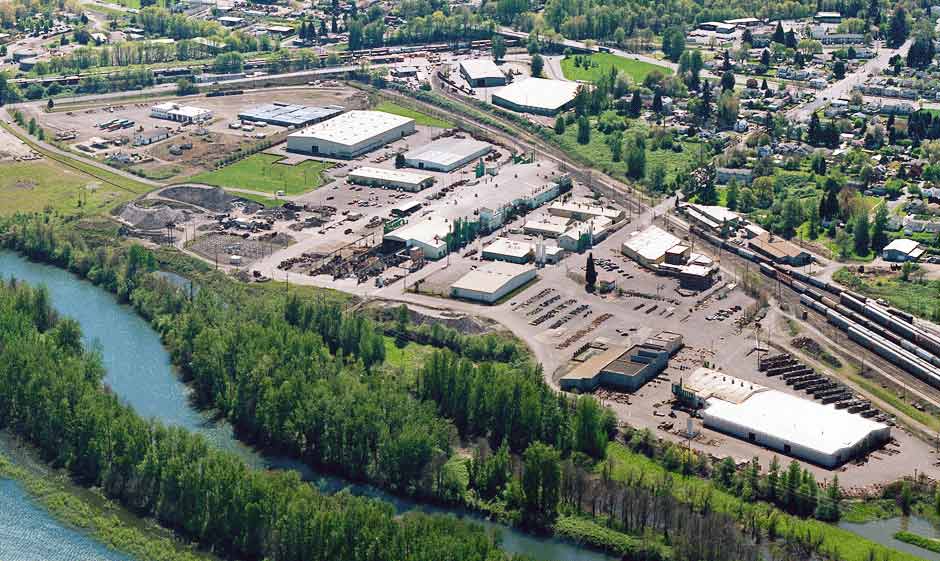Columbia Steel Participates in Cleaner Air Oregon
In October 2015, U.S. Forest Service air monitoring stations detected high levels of pollution in Southeast Portland. Environmental officials soon tracked the pollution to a local stained glass manufacturer that used heavy metals in its production process, releasing toxins into the air.
This situation was made possible due to a regulatory gap that allowed certain heavy metal emissions from small artistic glass manufacturers without a permit. As a result, the glass company’s “Simple Air Contaminant Discharge Permit” from the Oregon Department of Environmental Quality (DEQ) didn’t include monitoring emissions of all toxic materials used in the production of colored glass. That left state officials and the public uninformed about pollution risks.
In response, Oregon Governor Kate Brown directed the DEQ to close the reporting gap and launched the Cleaner Air Oregon initiative soon after. This action elevated Oregon into having the most stringent air pollution standards in the country.
How Cleaner Air Oregon Works
Administered by the DEQ, Cleaner Air Oregon requires all facilities with air permits to submit an inventory of all potential emissions, and once called into the program, to calculate the potential health risk to people nearby. Facilities with emissions that exceed acceptable levels will have to take steps to reduce air pollution.
This legislation affects new and existing facilities differently:
>> New Facilities: Before applying for a Basic or General Air Contaminant Discharge Permit, new facilities must first identify potential air toxins, inventory potential emissions and assess local health risks.
>> Existing Facilities: Unless making significant modifications, existing facilities do not have to complete assessments until they’re “called in” to the program. Early in the process, the DEQ identified 350 facilities for review and expects to call 20 existing facilities into the program each year.
Cleaner Air Oregon identified the pool of manufacturers based on several criteria, including the location of the facility and DEQ’s rough estimate of potential emissions. A facility “called in” to the program must pay for testing and computer modeling to predict its environmental impact.
Columbia Steel Included in Initial Cleaner Air Oregon Assessments
In 2019, the Oregon Department of Environmental Quality included Columbia Steel in the first group of 20 facilities to participate in Cleaner Air Oregon assessments. As part of the risk assessment process, we’re working with the Oregon DEQ to collect and report information on our emissions and develop computer modeling on how those emissions affect the surrounding area. We will take corrective action if those results fall outside of DEQ’s new, more stringent guidelines.
It’s important to note that the DEQ included our company in the first batch of program participants based on several complex factors which included an uncertain estimate of our use of certain metals. However, according to the DEQ’s original press release, our inclusion “is not a risk assessment, and the results are not a health assessment or statement of potential health risks.”
These are comprehensive and complex assessments that have never previously been executed as part of Oregon’s permitting process. As a result, the delivery schedule has been pushed back. We anticipate testing, updated emission inventory, modeling and risk assessment to be complete by mid-2021. We’ll keep providing updates along the way.
Always Striving for Improvement
While this new regulatory approval process will be a significant undertaking for our company, we’re happy to be among the first of hundreds of Oregon companies to take part in this important process. We’ve operated for decades under air permits without violations, and we believe this new program will help us continue our efforts to evolve and improve over time. We also hope that as we pioneer this new process with our DEQ partners, companies in subsequent groups can use our experience to fulfill their requirements more quickly and easily. In the end, Oregonians across the state will enjoy cleaner, healthier air. That’s a goal we should all strive for.
